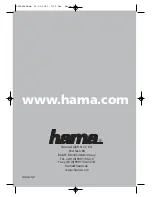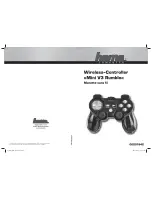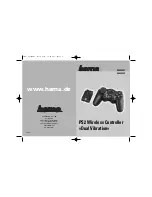
5Functions set with parameters
About singular point passage function
5-400
(4) Singular point passage function in automatic operation
In order to use the singular point passage function in automatic operation, make the function valid in the
TYPE specification for each target interpolation instruction.
TYPE (Type)
[Function]
Specify the singular point passage function in the TYPE specification of an interpolation instruction. The
interpolation instructions that support this function are linear interpolation (Mvs), circular interpolation (Mvr,
Mvr2 and Mvr3).
[Format]
[Terminology]
<Constant 1>
0/1
: Short cut/detour
<Constant 2>
0/1/2 : Equivalent rotation/3-axis XYZ/singular point passage
[Reference Program]
1 Mvs P1 TYPE 0,2
' Perform linear interpolation from the current position to P1 with the sin-
gular point passage function enabled.
2 Mvr P1,P2,P3 TYPE 0,2
' Perform circular interpolation from P1 to P3 with the singular point pas-
sage function enabled.
[Explanation]
(1) A runtime error occurs if 2 is specified for constant 2 for robots that do not support the singular point pas-
sage function.
(2) The structure flag is not checked between the starting point and the end point if the singular point passage
function is specified. Moreover, since the structure flag of the target position cannot be identified, the move-
ment range is not checked for the target position and intermediate positions before the start of operation.
(3) If a speed is specified with the Spd instruction, the specified speed is set as the upper limit and the robot
automatically lowers the speed down to the level where a speed error does not occur near a singular point.
(4) The optimal acceleration/deceleration is not applied for interpolation instructions for which the singular
point passage function is specified; the robot operates with a fixed acceleration/deceleration. At this point, if
the acceleration time and the deceleration time are different due to the specification of the Accel instruction,
the longer time is used for both acceleration and deceleration.
(5) The specification of the Cnt instruction is not applied to interpolation instructions for which the singular
point passage function is specified; the robot operates with acceleration/deceleration enabled.
(6) If the current position and the starting point position are different when a circular interpolation instruction is
set to be executed, the robot continues to operate until the starting point using 3-axis XYZ linear interpola-
tion, even if the singular point passage function is specified in the TYPE specification.
(7) If an interpolation for which the singular point passage function is specified is paused and the operation is
resumed after jog movement, the robot moves to the position at which the operation was paused according
to parameter RETPATH. If parameter RETPATH is set to 0 (invalid: do not return to the paused position),
the structure flag is not switched unless the motion path after resuming the operation does not pass a sin-
gular point as in the figure below. Thus, the posture of the robot at the completion of interpolation may be
different from the case where the operation is not paused.
TYPE[]<Constant 1>, <Constant 2>
















































